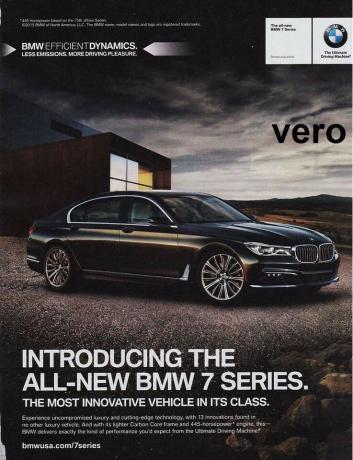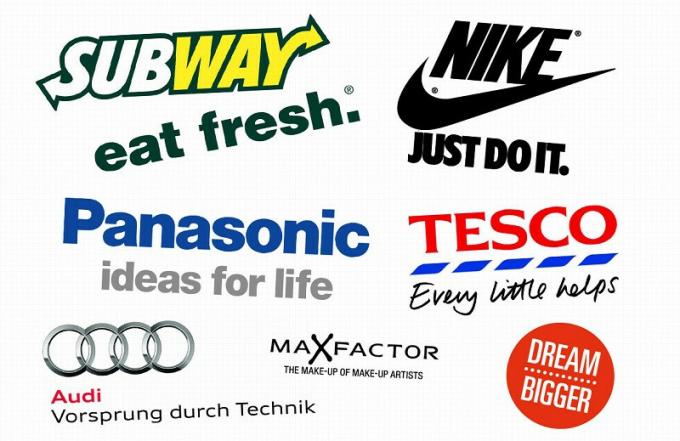The 7 elements of an advertisement
Every day we are bombarded by advertisements, but not all of them succeed, far from it.
In this article we will review those components that can not be missing in any advertisement if we want this to be successful. We will delve into each of them and see what role it plays in transmitting the message and the persuasive process that advertising seeks.
- Related article: "The 28 types of communication and their characteristics"
The importance of the parts of an advertisement
Although we believe that advertising is a relatively recent field, it is not like that, far from it. To get an idea, we must know that tablets belonging to merchants of Babylon of the third millennium BC, in which different products and services. The same has happened in archaeological excavations in Egypt, Pompeii, Greece or Rome. The bottom line is that advertising has been with humanity since almost the beginning of history.
Of course, what is certain is that since the last century, this field of study has practically become a science, and therefore
countless studies have been conducted to investigate the elements of an advertisement to determine which styles work best and to be able to get the most out of each one of them, making our ad achieve the maximum impact in the audience and in this way to achieve, ultimately, more sales of our product or service.When preparing an advertising message, we can try to enhance some of its elements, and probably in this way we will achieve a certain reception from some consumers. But, if we really want to create a spot that achieves its effect and attracts significant attention in the collective to which it is directed, we must pay attention to all the elements of an advertisement, and not only to one. This is because each part is fulfilling a certain function.
Therefore we would be talking about a synergy system in which the different parts, when coming together, achieve a greater impact than when working separately. Therefore, as they are complementary pieces of the same puzzle, we must not relegate any of them to a second position and we must put our efforts to get the best version of each of the elements of an ad advertising. Only in this way will we be guaranteed a good part of the path to commercial success.
The different elements of an advertisement advertisement
We have already seen the importance of these components, but the most important thing remains: to know what they are and what characteristics each one of them has. Therefore, below we will see a list that will allow us to know them and discover their peculiarities, in a way that we have a notion of what are the keys that marketing and communication professionals have in account.
1. The bullet, or bullet
The first of the elements of an advertisement is the bullet, also called a bullet because of its nomenclature in English. The name is quite descriptive, and is that this element, the first of all, has to act as a shot. Something fast and direct, that causes a shock in the audience and in this way manages to attract attention. And it is that attention is the key to any advertising campaign. If we can get attention at the beginning of the message, we will have a good part of the work done.
The bullet is usually a sentence of few words. Perhaps a question that prompts the receiver to think and reflect on the answer. A controversial claim can also be used, something that provokes a shock by calling into question the viewer's belief system. It doesn't matter because we will resolve that conflict with the rest of the elements of the advertisement, but the important thing is that we will have managed to get the person to direct their gaze and her attention to give us a few seconds of their time.

2. The header
Once we have managed to capture the attention of the potential client, we have to take advantage of the situation and strike again with a short message, this time, the headline. Is about anticipate to the viewer what is the general idea that we want to convey throughout the message, and therefore the headline should be short and attractive. It is essential that this is the case to ensure that he continues to pay attention to us and that our message permeates his unconscious.
The header, as his own name suggests, is usually located at the top of the ad, since it is generally where the The consumer will place his gaze first, and therefore it must be the trap that, like the bullet, catches the viewer's attention and not it. release, if possible until you have received the complete message that we are trying to convey to you with all the elements of a advertising spot.

- You may be interested in: "7 keys of Psychology applied to Marketing and Advertising"
3. The photograph
The next element is not verbal, but is an image, a photograph. It serves to support the message and also attract the eye and with it the attention of the potential consumer. In that sense, its function would be essentially that of an element of attraction.
This is one of the most important elements of the advertising piece, because it is capable of adding a great emotional charge and provide you with concepts that can be quickly perceived and understood, no need to overthink the meaning of the ad. In other words, the photography of an advertisement takes advantage of the "mental shortcuts" route, the heuristics, to capture attention and convey both the main idea to be communicated and the emotional tone of the ad.
In this sense, many advertising campaigns resort to the use of photographs of attractive people and also of public figures, be they from the world of cinema, sports or other areas. Logically, this strategy entails an economic cost that can sometimes be enormous, depending on the the relevance of that person and therefore the fees required to lend their image to said Bell. Therefore, it is not something within the reach of all brands. But even if the face is not known, it can have a tremendously powerful effect if it fits with the message we want to convey. Of course, you can also choose to display something other than a human face.
In fact, many products are so attractive that the brand chooses to use their image directly for photography. Equally, if displayed in a proper way, it can (and indeed does) work very intensely. Of course, photography must have conditions at the level of lighting, resolution, angle, composition and many other variables that make it visually attractive in itself. There is a whole science behind this field.

4. The body of the message
Although all the elements of an advertisement are important, as we have already seen, it is possible that the body of the message is vital. The ones we have seen so far had the essential function of capturing the customer's attention, but it is the body that, once the person is paying attention to us, has the function of conveying clearly and concisely the message we want to send you and, more importantly, convincing you that said product or service is for him.
The body must be direct. We know that the attention time is going to be very limited and therefore we cannot waste it with long texts, offering endless explanations of the advantages of our product. Not. It must be fleeting, a few lines in which all the strengths of what we are offering are condensed. The perfect message is one that not only tempts the consumer, but also convinces him that he needs to purchase the product.

5. The logotype
Accompanying the message and in a clear place, the brand logo must appear. Is about that small image in which you can read the name of the brand or company, that everyone should associate with our products and that should provoke a reaction just by looking at it.
The main function of the logo is to make people quickly and clearly identify the brand or company launching the ad; thus, this visual element must be memorable, so it is intended to be easy to distinguish from the rest of the logos, and not to be difficult to understand or read.
This logic has led to a progressive simplification of logos, which increasingly try to look more like an icon; in some cases it even goes to the extreme of using a symbol to replace the logo, as is the case with famous brands such as Nike or Apple. In other cases, when the logo and the symbol form different visual elements but are presented next to each other, we speak of a logo symbol.
There are brands that we all recognize just by appreciating the logo, but others must build a reputation and build their image., associated with the quality of its products. In those cases, it will be even more necessary for the logo to be clearly appreciated so that customers can make that visual association.

6. The slogan
One of the elements of an advertisement that usually accompanies the logo is the tagline. It is a short phrase that must contain a powerful message, a slogan that, like the logo, we associate with the brand and causes us a positive emotion every time we hear or read it. The slogan can be unique to the brand or it can be made for the specific advertising campaign we are working on.
Some slogans last over time and manage to generate a greater memory than the brand itself. For this reason, a powerful slogan must be taken advantage of and we should not substitute it for another lightly, since we run the risk of weakening the brand image and cause confusion in the perception of consumers, who can fail to recognize the product as easily as before.

7. Contact details
The last of the elements of an advertisement is obvious: the contact details. Well It is useless that we have managed to capture the attention of the consumer and also have convinced him that he has to acquire our product and serviceIf you don't know how to do it later. Therefore, it is necessary that we leave a contact, which can be the store's own address (physical or online), or simply the social networks from which you can contact, such as Facebook, Twitter, Instagram, etc.
Bibliographic references:
- Boscán, J.P., Mendoza, M.I. (2004). Semiotic analysis of perfume advertising. Option.
- Degrado-Godoy, M.D. (2005). Television, advertising and communication. Communicate: Scientific Journal of Communication and Education.
- Solís, F.M. (2016). The visual metaphor, a communicating element of brands in outdoor advertising. Social Prism.
- Vilches, A. (2012). Advertising and culture. ROUTE Communication.
- Walzer, A. (2010). Art and Advertising: Elements for debate. Aisthesis.
